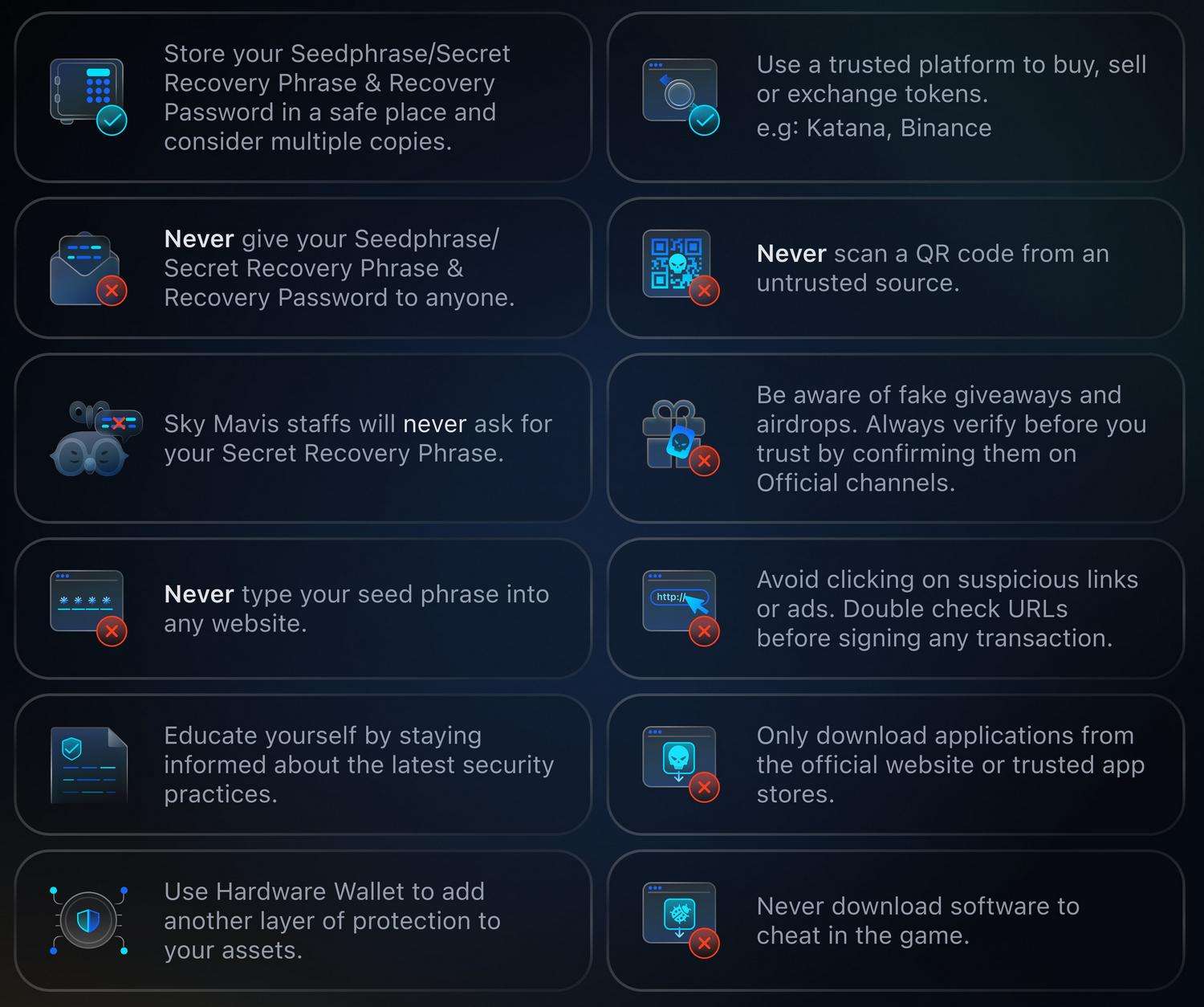Stay Safe!
The Crypto universe is wonderful and provides us with many unique moments!
However, we know that some people are malicious and take advantage of situations to harm others for their own benefit. Your security is very important to us. Therefore, we have prepared some tips to help you keeping your account safe!
Your seed phrase is everything! Don’t share with anyone under any circumstances!
- Dont enter your seed phrase on any website!
- No one has the right to question your seed phrase!
- Always use unique and strong passwords!
- Enabling two-factor authentication (2FA) is one of the best things you can do!
Click to enlarge…

Crypto Phishing Attacks / Scams
What is Phishing?
Phishing is a attempt attack where malicious individuals try to obtain sensitive information such as: usernames, passwords and other personal data by disguising themselves as trustworthy entities.
What is the most common phishing scam on Web3?
- Email Phishing: Fraudulent emails that appear to come from reputable sources.
- Spear Phishing: Targeted attacks directed at specific individuals.
- Clone Phishing: Duplication of a legitimate, previously delivered email or message to trick recipients.
How I can recognizing Phishing attempts?
- Suspicious links: Hover over links to see if they lead to legitimate websites.
- Unexpected attachments: Be wary of any type of attachments.
- Urgent messages: Messages that create a sense of urgency to claim or redeem a prize.
- Too good to be true: Offers or prizes that seem excessively generous – You won a raffle! Click here to claim.
Phishers will always try to confuse you and make their information seem authentic, so they often abuse tactics using domains similar to official ones. So always double check the URLs, links and confirm from a official account.
Whar are the best practices for Anti-Phishing security?
- Always verify the source: Always check the sender’s email address and be cautious of emails from unfamiliar sources.
- Avoid clicking links: Do not click on links in unsolicited emails or texts. Instead, type or copy the URL directly into your browser and double check if the URL is correct.
- Examine the content: Look for spelling mistakes, generic greetings and inconsistencies in the message.
What to do if you suspect a Phishing attack?
- Do not respond: Do not engage or reply to suspected phishing messages. Block and mark them as spam sender.
Phishing attacks are sophisticated and constantly evolving. Always stay safe, and stay vigilant, questioning any unsolicited information sent to you. Remember, caution and awareness are your best defenses against phishing threats.
